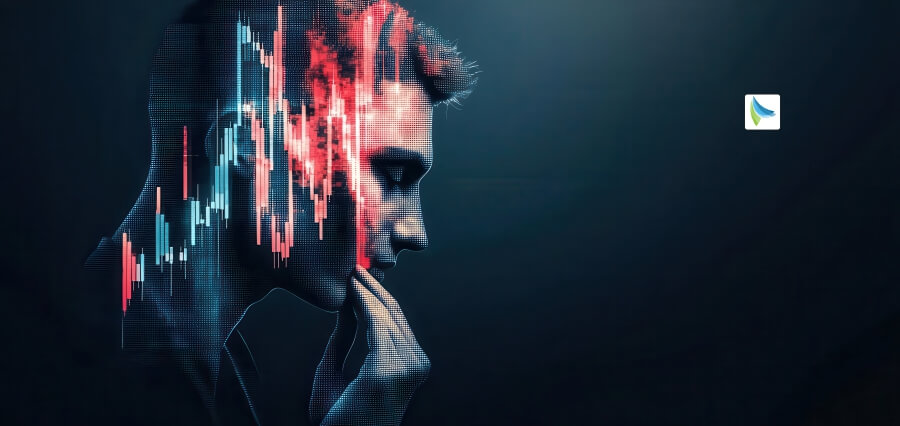Curious about healthcare mobile app development? Rightly so, the market is booming, and the competition is growing. It is time to bring your unique idea to the playground. But how do you ensure it does not flop? Without further ado, here are the ten keys to set you up on your way to making a great healthcare application.
- What is the purpose?
The most important thing that inevitably comes to mind when thinking about an application idea is its purpose. It surely is, because what is the point if there is none? Since your application is a product and a service, you must think of it as fulfilling a customer’s need. Therefore, let’s examine who exactly uses mHealth solutions.
For professionals
First off, it is the professionals. You may imagine a doctor needs to coordinate with his colleagues and take good care of different patients. To this end, a hospital management aid brings the flexibility of mobile to the workplace. Many things become easier when managed by a unified «brain». Here, an application serves as a personal gateway to that center and brings all the data together in a friendly form. This inevitably leads to some positive revenue changes. For example, services that used to take longer due to unnecessary bureaucracy are now rapidly improved. Furthermore, if an app makes use of a subscription model, it can lead to additional capital for the hospital.
Now, doctors aren’t the only ones in need of medical solutions. Think of a typical student, for example. They have to go through mountains of information to prepare for their challenging careers in healthcare. You would not want these people misinformed when they are placed in charge of your health, right? Thus, an educational application could massively enhance the learning process and even help with references post-graduation. One case where this might be helpful is when a doctor needs to perform a diagnosis quickly to start treating the right lines straight away, when time is of the essence, making use of technology is no sin.
For patients
Secondly, mobile health solutions are obviously in demand among patients. There has been substantial growth in this sector in recent years and it shows no signs of slowing down. It might just be the opposite. Just imagine what the coronavirus pandemic did to telemedicine. Thankfully you don’t have to imagine – here’s an article on it right here.
Proceeding, many useful features come to mind. People use applications that sync to their blood pressure monitors and receive much-needed advice exactly when anything out of the ordinary happens. Think medication timers, treatment advice – anything to make the patient’s life easier. People are beginning to pay more attention to their food, too. This is where a dieting application comes forward. In conjunction with fitness apps, this category proves popular.
It’s not just the physical health, either. Mental wellness awareness has most certainly spiked among users. As a result, therapy goes mobile. Bring on online coaching, sleep helpers, meditation, gamified life progress trackers, and so on.
- Where do you start?
Now you have a basic idea of the vast space that is mHealth. Where do you go from here? First and foremost, get your idea straight. This is the process that they call «validation» in the biz.
Idea validation
As mentioned above, your application serves a purpose similar to healthcare web development. Great! Now, which one exactly? You must have a crystal-clear picture of the niche you are going to step in. Who would want to start down the wrong road from the very beginning? Therefore, do your homework and analyze the environment. Test the waters. Bring on some doctor friends, if you have any, if none, get some. You are much more likely to succeed when you have complete confidence that what you’re doing is right. That people need it. Which leads to…
Market research Application
Hate to break it to you, but you are not the first person to make an application. That boat has sailed. Fret not, you can still make the best one yet. To do that, know your friend and foe. Which apps are already doing similar things? How competitive is your niche? Would you call it a «red ocean» full of sharks? The more competition out there, the more you have to stand out. However, that also means that what you’re about to do is truly needed. Millions of people can’t be wrong, right? At least in their desires. Yet, your job at this stage is to figure out what the true needs are. Now, the tricky part is finding the right audience.
Target audience
Simple, this one. Who are your users? This is where you have to resist the urge to think about it for no more than ten minutes. Indeed, the question list is astonishingly sizable. For example, where do they live? What is their age? How educated are they? How much do they make? Where do they shop? What is their preferred medicine? Which hospitals might they be close to? What is their medical background? What helps a lot is asking the people themselves. Therefore, you could prepare a market survey and dig deep into your customers. Not literally.
Now that you have the idea in place, time to choose your tools.
- Choose your destiny
Tech stack
This part is where you carefully read your target audience brief again and decide on the platform to prioritize. It is important because there are many different ways you could go about development. First, there are «truly» native applications. Built with, let’s say, Swift for iOS and Kotlin for Android. A great option yet may take a tad more time and money than a cross-platform solution. You could go with Flutter to have a single codebase for both iPhone and Android: https://doit.software/services/staff-augmentation/flutter-developer. Whichever you pick, take your resources into account. By the way, you don’t only plan to spend money on the application, but to also earn some, correct?
Monetization
This one may honestly make or break your whole application. It is also not a thing to be put away for when you already have a product. So, you have to have an answer you can go with right now. Is your application going to be free and have in-app purchases? Is it going to charge a subscription fee? Maybe a good-old upfront payment? In today’s market, correct pricing impact your downloads and engagement. It also influences how you’re going to go about developing your app, so it is a big deal.
After all this, how do you know whether your ship will sail? Well, make a smaller one first.
- Build an MVP
At first, you would want some simple prototypes to know whether the idea works. After some iterations, it grows in weight and becomes a product.
A minimum viable product has it all in the name – just the core features done well. Making one is beneficial due to two simple reasons:
- It is cheaper to make than the whole thing.
- You get a product faster.
What are the features your app could have at this stage?
Signing up/Signing in
People tend to appreciate a certain degree of variety here, but a phone and an email option work well. Don’t forget about social media.
Personal space
Were it Facebook, this would be a user’s page. The essentials are, of course, personal information, a picture, and some medical information (prescriptions, history, etc.).
Moving around
Static applications are no fun, but it’s the functionality that comes first. Your users probably want to look up some doctors and choose different criteria for that. In the end, they tend to enjoy a feedback option, such as being able to add a rating or a comment.
Core interactions
For a telehealth application, these would most likely be:
- appointments,
- schedules,
- contacting a professional,
- video and text chat with a practitioner,
- payments for services.
So far, we have touched on the more technical aspects. Now, it’s time for the art of the experience to step into the picture.
- Design
It not just about what your application does, but how it does it and how it looks while at it. There are no hard rules to follow here since this part is often seen as the most creative. Nonetheless, absorb a few tips and you will be better off at your next design at-bat. While there are many aspects to design that deserve a guide on their own, the most important ones to look out for in health apps are flow, responsiveness, inclusivity.
Flow
There is indeed a vast number of different target audience combinations that all have unique habits and traits. Even more true is that while your application focuses on one, it should be usable by humans in general. That means having a user journey that makes sense, cutting away all the clutter, combining actions to reduce steps, reusing as many elements as possible with a different meaning, and so on. You have to think about what action is the most logical for a person at any point and adapt to that understanding. Does your user need to see their name on top of the screen everywhere? What are the things you’d like to present during a video call? Is it crucial to have a ‘hang up’ button visible at all times? An application benefits from the ability to «read minds», so that the user is subconsciously surprised every single time. In all truth, a good flow is often invisible. Invest in it because it is one of the biggest problems when left unchecked.
Responsiveness
This point mainly concerns adaptability across devices. The good design stays good with minimum adjustments, regardless of the phone’s screen size. Do you plan to include a landscape mode? And if your application has a desktop version planned, think about how that would look too.
When designing for iPhone especially, you want to abide by the rules. Apple is adamant you get the design right. Their rules and major themes include clarity, distinctiveness, and fluidity, among others. Check the guidelines to have a much better chance of rising to the top of the charts.
Inclusivity
This follows closely after responsive flow. A good application is so accessible and inclusive that your target audience feels like their needs are respected. How do you do it? It all stems from your particular case, yet it is always good to offer an option to simplify or enlarge the interface. Mind the color-blind people, too.
In general, it is not advised to cheap out on design in this day and age. Done right, it will help your application stand out. Anyway, you got that down. What do you do? When in doubt, test.
- Testing
It is natural to expect people to have higher standards for an application that deals with their health rather than with something entertaining. As a result, your testing needs to be on top of the game. Add all the regulations you may be subject to, and you have a serious task at hand. Regardless of what the contents of your app are, the process needs to be set up in such a way that allows you to gather vital feedback at all the right milestones.
A or B?
This popular testing method is a lifesaver when you are confronted with a design dilemma. Not sure which way to go? Make both and let the audience decide. What’s good to remember though, is that you don’t have to wait until the two paths have diverged so far that it is no longer viable to continue working on both. It is believed to work best in smaller iterations. Your statistics will prove that.
- Advanced features
Records integration
Medical records are increasingly going digital, allowing for novel integration possibilities. Such an electronic record easily stores all the necessary information, available throughout the system. Thanks to that, keeping track of things is getting less bothersome. The overall status is available at a glance and more detailed data can be compiled into readable graphs to visualize how the patient is doing. Now, where this goes a step further is with electronic health records. They not only contain hospital data but also as much as possible about everyone else involved in a patient’s care. That allows for a full picture. Therefore, make use of this data where applicable.
Other connections
Our devices collect more and more information every day, so it is almost silly not to tap into it where useful. Just don’t forget about all the necessary security and regulations mentioned later. Anyway, imagine how many of your potential users also have some fitness or smartwatch with all those sensors. So, think about how your application could benefit from all the other data on your audience’s smartphones. Explore what kind of Bluetooth-connected devices, etc. you could bring on board to help keep up with your customers’ daily health. Even the Health app on iPhones already stores a wealth of information to integrate. Thus, keep an open mind.
Internet of Things
Talking of things collecting data… So many of them just happen to connect to the Internet! Many more people are adopting voice assistants and smart home hubs to stay in the loop. And if that’s what your customers are using, you want to keep it on top of your mind. Perhaps your application could use a way to be accessible from Alexa or Google Home? Perhaps there is nutritional information to be used with a little help from a smart fridge? The possibilities are rapidly expanding.
Artificial Intelligence
The power of AI in health lies mainly in the use of neural networks and their learning capabilities. This wealth of data from before? AI steps in to master the art of diagnosis, anomaly identification, drug development, and even medical advice. If that’s not so commonplace to get a prescription from your phone by uploading a couple of pictures – who knows. Perhaps it’s the next big thing.
Blockchain
This technology is big on two fronts: security and security. Firstly, of data. Secondly, of payments. Estonia, for example, recognized this as early as 2012. That country is betting on the blockchain when it comes to dealing with virtually all medical transactions and prescription data, as well as general health information. There is plenty of information about blockchain on the web, but you might be thinking: how does this benefit your app? Consider what it could mean for the way you store patients’ data and accept payments. Food for thought.
Virtual and augmented reality
Already huge in education, virtual and augmented reality training applications aren’t going away anytime soon. Medics are using those to simulate operations, get familiar with expensive tools without having to purchase them, practice treatment, etc. It’s not just the doctors who get to do the fun stuff, though. Regular users could enjoy having some AR incorporated into a mental wellness application, for example.
Well, there has been a lot of ideation, prototyping, and designing so far. Yet since all this concerns people’s health and personal information, there are bound to be stringent regulations to adhere to.
- Data security and regulations
There are numerous acts and documents released all over the world that aim to tackle data security and medical information in particular. For example, the United States have guidelines for the security of electronic medical records from the National Institute of Standards and Technology. Next, the biggest piece of regulation would be HIPAA. It regards sensitive health information and pushes for safe and confidential conduct.
Furthermore, many pieces of data safety legislation have relatively recently emerged in and outside the States. These are:
- CCPA (US)
- GDPR (EU)
- PIPEDA (Canada)
- and others.
Depending on your area of operations, you must take into account the local laws. Your application needs to be compliant with appropriate rules. After all, it increases your trustworthiness in the eyes of your audience, too.
- Marketing
What do you want your users to know about your app? Let’s take that a step back. Do you want your users to know about your app? Obviously, yes. To get people to download, you must utilize everything at your disposal for your product to gain any traction. The keys here are:
- tailor your marketing material to your target audience,
- allocate at least 30 percent of your budget for this purpose,
- do not underestimate the power of people casually mentioning your application to friends.
Use effective communications channels and tools to explain your application and how it works in greater detail. For example, creating a mobile app explainer video works much more efficiently than a text guide. Use smooth motion graphics and typography in your videos to communicate your application with the users and give them an effortless way to access clear, precise, and authoritative information from the product.
- Ongoing maintenance
Many people tend to forget in the heat of the moment that an app’s life only begins at release. After you are going to have it out, plan to spend time and money on updates and hotfixes to keep the app working as it should. Even more, another task is staying relevant and ahead of your competitors. How do you navigate this stage? First and foremost, don’t forget that you can keep testing your app just like you already did before. QA will still be active and user feedback is going to drive your development since it represents the demand. All that means that however the app was made, it is never truly done. It’s just the work that stops one day. Therefore, if you’re going to partner with a development company to create your mHealth app, it better be reliable and with a long-term outlook.
Conclusion
To sum up, what are the ten keys to success in mobile healthcare? It all starts with a purpose – find yours. Then, invest enough time to get a feel for the market and an audience. After that, carefully select your tech stack and set your sights on one of the monetization options out there. With that done, you should stick to the core and move towards an MVP. Find the right essentials for your app the make it stand out, but don’t forget about users’ growing expectations. In design, focus on the flow, responsibility, and inclusivity. Your app is in health, thus has to be accessible. Next, do not disregard rigorous testing and stay flexible. Stay relevant and try to include usable for you up-and-coming features. Doing all that, keep your security tight and protect users’ data according to law. After all, be the owner of your app. Own the reputation and the brand. And with that, you can support your app as it moves towards a successful future.
For More Information: Click Here


















